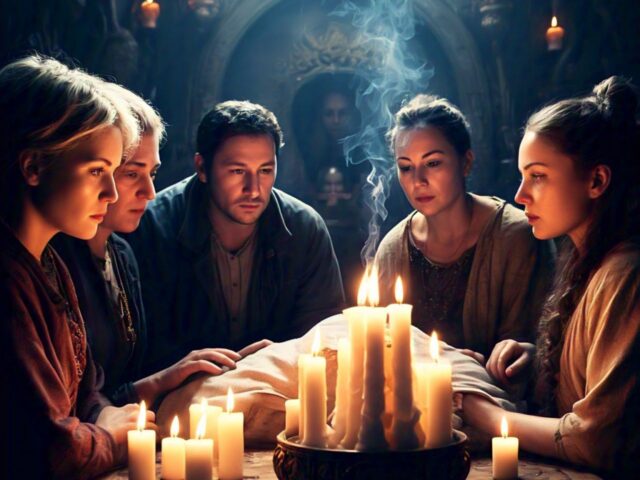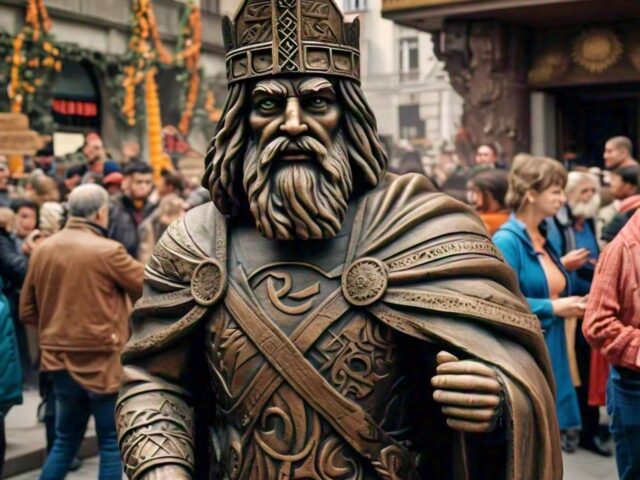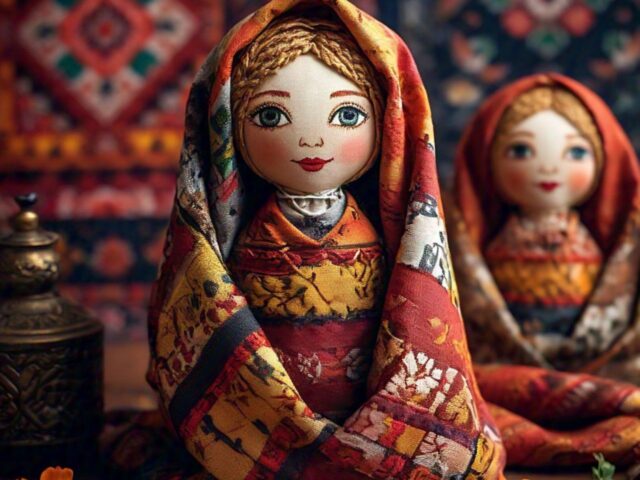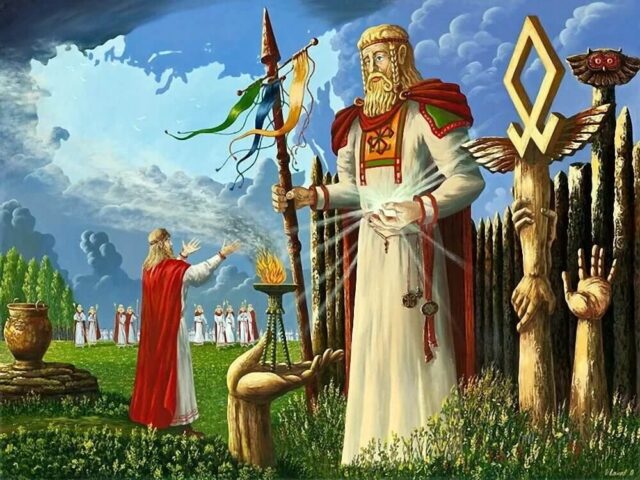As the winter snow begins to thaw, a delicate, white flower emerges, defying the cold temperatures. The snowdrop (Galanthus nivalis), with its fragile, drooping petals, has captivated the hearts of many cultures, particularly in Slavic traditions. Ancient Names and Symbolism The snowdrop’s Russian name, “podsneznik,” literally translates to “under the snow,” reflecting its unique ability to bloom amidst the winter landscape. In ancient Slavic languages, the flower was known by various names, such as “snigurka,” “skororost,” and “moguryanin,” which means “strong” or “powerful.” In Slavic mythology, the snowdrop is associated with the goddess Lelia, who …
 Blog
BlogThe Symbolism of the Snowdrop: Unveiling its Ancient Slavic Significance
 Blog
BlogCelebrating Spring with Ancient Slavic Traditions
As winter’s chill begins to fade, the ancient Slavs welcomed the arrival of spring with a series of vibrant celebrations. At the heart of these festivities were the gods of spring, led by the radiant Yarilo, who brought warmth and light to the world. The Gods of Spring Yarilo, the god of spring sunshine, was joined by his brother Ovsyannik, the protector of spring birds and the helper of growth, who “pulled” shoots from under the snow. Together, they summoned the arrival of spring, building bridges of sunlight for the bright-haired Lada. They were often …
 Blog
BlogThe Symbolism of Martinichka and Vesyanka Dolls in Slavic Culture
In Slavic cultures, dolls have long been an integral part of traditional rituals and customs. Two such dolls, Martinichka and Vesyanka, hold significant importance in Slavic mythology, particularly during the spring equinox. While they share similarities, these dolls have distinct differences in their origins, symbolism, and uses. The Arrival of Spring: A Time for Renewal In Slavic cultures, the arrival of spring is a time of great anticipation and celebration. After a long, harsh winter, the warmth and light of spring bring new life and energy. To usher in this new season, Slavs would create …
 Blog
BlogDiagnosing with Thunder Candles in Slavic Culture: Unveiling Hidden Blockages
In Slavic traditions, Thunder candles have long been used for diagnostic purposes, particularly during the Gromnica period. This ancient practice, passed down through generations, involves using a burning candle to reveal energetic blockages within an individual. In this article, we’ll delve into the art of diagnosing with Thunder candles and explore the hidden meanings behind the candle’s behavior. The Diagnostic Process To perform the diagnosis, the practitioner holds the burning Thunder candle in front of the person, moving it clockwise from head to toe. If the candle starts to emit black smoke during this process, …
 Blog
BlogThunder Candle Varieties: Exploring the Essence of Ritual Candles in Slavic tradition
Thunder candles come in at least three types, each serving a unique purpose and symbolic significance in ritual practices. 1. Purifying Candles The first type of thunder candles is the purifying candles. In addition to wax and a wick, these candles contain herbs that ward off evil spirits. These herbs, known as “бесогонные травы,” include wormwood, nettle, juniper, and St. John’s wort. The term “бес” refers to the internal distortion within a person that hinders them but often goes unnoticed. 2. Empowering Candles The empowering candles, also known as giving or filling candles, contain herbs …
 Blog
BlogFebruary Slavic Traditions: Exploring Ancient Practices and Symbolism
Have you ever wondered about the unique customs and traditions our ancestors observed in February? What rituals and practices were significant during this time? 1. Frost Magic and Snow Creations Slavs often engaged in frost magic by crafting snowmen and various snow figures, not just for aesthetics but for practical purposes. These icy figures were used to freeze pieces of birch bark containing descriptions of negative situations one wished to rid themselves of. It was believed that as the snow melted in spring or was destroyed by a blizzard, the associated problems would gradually dissipate. …
 Blog
BlogThe Power of Thunder Candles in Slavic Culture: A Guide to Combining Colors
Thunder candles have been used for centuries in Slavic traditions to promote spiritual growth, harmony, and balance. By combining different colored candles, you can amplify their effects and achieve specific goals. In this article, we’ll explore the art of combining Thunder candles to unlock their full potential. Combining Colors of Candles for Specific Goals Remembering the Importance of Balance in Colorful Candles When working with Thunder candles, it’s essential to maintain balance and respect the natural order. Avoid excessive use or manipulation, as this can lead to negative consequences. Remember that every action has a …
 Blog
BlogOlshanka: A Symbol of Slavic Heritage
Discover the enchanting world of Olshanka, a traditional Slavic doll steeped in history and cultural significance. This handmade treasure is a testament to the rich heritage of Slavic craftsmanship, embodying the region’s folklore and mythology. Typically made from natural materials like wood, clay, or fabric, Olshanka dolls are adorned with intricate patterns, colors, and symbols, each carrying its own meaning and significance. These dolls are not only beautiful decorative pieces but also serve as talismans, warding off evil spirits and bringing good fortune. Explore the fascinating story of Olshanka and delve into the world of …
 Blog
BlogSlavic Gymnastics: Exploring Ancient Traditions and Practices
Slavic gymnastics is gaining popularity, with various interpretations emerging in modern times. The practice has roots in ancient Slavic traditions, and today, individuals are rediscovering and adapting it in different ways. While copyright protection may be limited in Russia and neighboring countries, many enthusiasts are drawing inspiration from original authors to create their versions of “new Slavic gymnastics.” This resurgence is particularly prevalent in Slavic regions, where the practice thrives. 1. Adamovich Gennady: Pioneer of Slavic Gymnastics for Women Adamovich Gennady introduced Slavic gymnastics for women, known by different names and widely embraced today. His …
 Blog
BlogAncient Slavic traditions in our daily life
Slavic traditions are deeply rooted in the daily lives of the Slavic tribes, where every action was performed consciously in a meditative state, manifesting images from the mind into reality. Incorporating these traditions into our modern lives can bring a sense of connection and gratitude to our daily routines. For the Slavs, tradition was an integral part of life. Upon waking up, a Slavic individual would express gratitude and bow towards the sun, acknowledging the new day. Different regions honored various sun gods like Jarilo, Dazdbog, Hors, and Svetovit, reflecting the diversity of beliefs within …